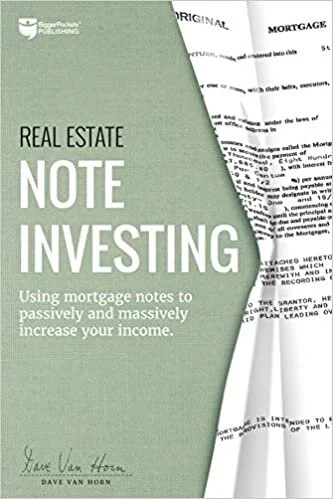Varying Strategies for Real Estate - Which one Works for You?
by Christopher Levarek
“Two roads diverged in a wood, and I—
I took the one less traveled by,
And that has made all the difference.”
- Robert Frost
If you haven’t read “The Road Not Taken”, a short poem by Robert Frost quoted above, I highly encourage you to. It greatly exemplifies the power of the choices we have at our disposal. Each person walks their own path, molding and crafting the life experience of their desires.
The path of real estate holds many investment opportunities and the strategies available are only limited by one’s creativity. Although I wrote an ebook on 6 aspects that might make an investor choose certain paths in real estate or not, today we highlight some of the choices at the reader’s fingertips in real estate. There are many out there but which one is the right one, or is it possible to try them all or diversify for better investment?
In this article, we will look at some common strategies to include, Buy and Hold, Short-term Rentals, Fix-N-Flips, Tax Lien Investing, Private Lender Options and more. Even if our company aligns with apartment syndications, covered in our last article, we would be remiss to not mention other strategies for the reader.
The Buy and Hold
One of the more common investments in real estate for newer and experienced investors, the buy and hold is just how it sounds. An investor buys a piece of property/land then slowly pays down the debt and holds, waiting for appreciation or the value to rise on the property. Since property typically is appreciating, the investor experiences a natural gain year over year in asset value and wealth.
This very often the first strategy for a new investor or a single-family homeowner who’s now moved to another house and rents out the first.
The Fix-n-Flip
Not for the faint of heart, this investment strategy requires purchasing property or land with the ability to “add value” to the purchase via renovations, zoning, etc. This typically means finding property off-market then putting in the work adding the value to finally sell the property at a higher price. Given a high rise to fame by the HGTV shows such as Flip or Flop, HomeTown, Fixer Upper, etc.
This is typically the first selection for the young ambitious investor however, we recommend caution unless working with experienced partners and teams. There can be some risk in lack of knowledge on the renovation budget and expedited timelines with lingering short term debt.
Short-Term Rentals
All the craze at the moment, STR (Short Term Rentals) have gained immense popularity over the last few years with names such as Airbnb and VRBO becoming common place in the English vocabulary. In fact, at time of writing, Airbnb just went public on the stock exchange.
As it sounds, this strategy involves buying and renting a property on a short term basis, by the day/night similar to a hotel. Using multiple forms of online platforms such as Airbnb, VRBO, AirDNA, Pricelabs, YourPorter and more, an investor can open up a property to online bookings at fluctuating daily prices.
This allows for high cashflows in high traffic or tourist destinations to investors while giving the renters the ability to stay in fully furnished homes with families and friends. However as a cautionary note, similar to a hotel, these type of strategies require high traffic markets, significant owner management and carry the risk of legislation or legal shutdown through state policy, HOA, etc.
As these cut into the profits of certain companies and state policies, it is safe to expect that legal or tax regulations will continue to shift around STR so take this into account. Create systems where possible and do your homework before jumping in.
Tax-Lien Investing
One of the less known investing methods into real estate, the strategy involves purchasing owed property taxes in a city/state. An investor can buy online, typically through the county website, debt on property for non-paid taxes by a landlord or property owner. A “tax lien” is created on the property when it is not paid and sold to the highest bidder on these sites.
Source: checkbookira.com
The investor bids for the lien at an interest rate amount to which, when they are the owner, they then receive interest on the unpaid amount. If the landlord/owner does not pay the amount due by a specific timeline, the investor has the authority to foreclose on the property and take ownership.
Although a more hands-off or passive strategy, there is a learning curve as this one requires knowledge of the market, the property and the bidding process in order to take advantage of opportunity. There are competing bidding companies who specialize in acquiring these tax liens as well so it is important to first get knowledgeable on the topic beforehand to be successful.
Private Lending
Did you know you can be the bank to another investor? One of the first partnerships I formed in real estate was with a private lender who helped fund my first project. A private lender is simply an investor looking for a passive investment whereby they lend money to a real estate project at a specified interest rate and timeline.
The investor or private lender typically receives a deed of trust, granting the property as a collateral to the investor, and a promissory note contract is written/signed by both parties. The promissory note states the terms of lending, interest rates and timelines. These very same documents are signed in almost all mortgage documents when closing on a house with a bank.
In this case, the private lender is the bank and the real estate collateral is in her/his name. These are relatively short investments but ensure you work with an attorney to craft the right documents and have a good working relationship with the other party.
Private Note Investing
Similar to the above, private note investing is when an investor purchases existing notes in the form of bank notes, hard money lender notes or seller-financed notes. Simply put, the investor is buying off debt owed in real estate. Many banks and financing institutions are selling these notes to recoup the money or to back out of non-performing arrangement or deal.
With the purchase of the note, the private investor owns the note contract and the secured interest along with it. Many options are now available as they can re-sell the note, foreclose and sell the property to another investor or simply receive interest payments on the current note.
If the note is non-performing, not making money, the owner can even restructure the note with the homeowner or come up with another flexible mutually beneficial strategy.
This one has a lot of creativity involved and varying ways to work in the space. We recommend reading “Real Estate Note Investing” by Dave Van Horn as an introductory book on the topic.
In Final
In this high level overview of some of possible real estate investment strategies, we hope we have given in a glimpse into the many choices available. Investing need not be done on default in a 401k whereby the results are difficult to predict and the outcome is rarely what is expected.
We recommend coupling some REI active and passive strategies together to achieve diversification and greater control on your investments. Or for one of the most hands-off investing and tax advantageous strategies in real estate, multifamily syndication, join the Valkere Investor Club to get started on the path.






